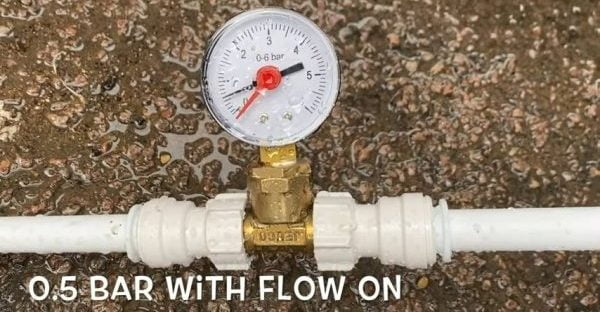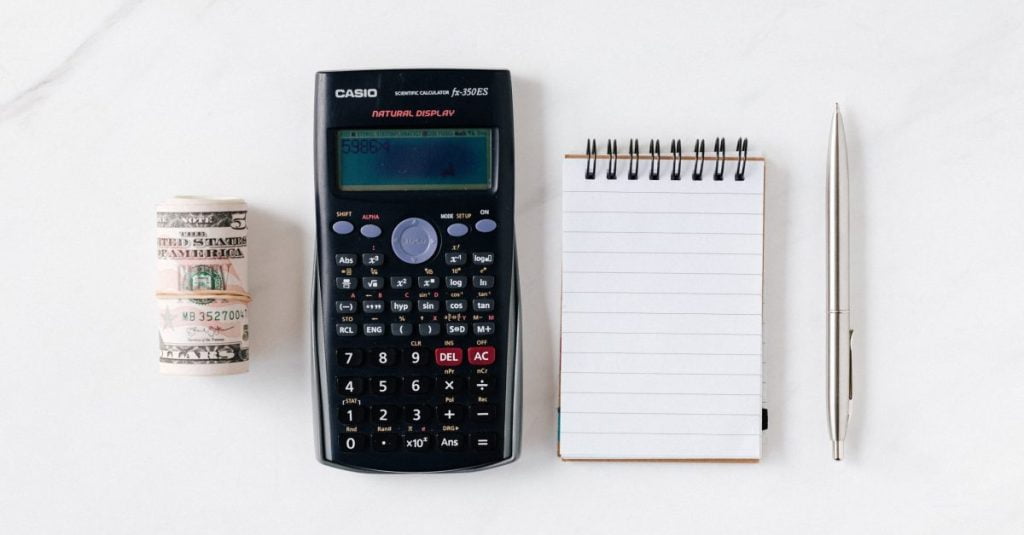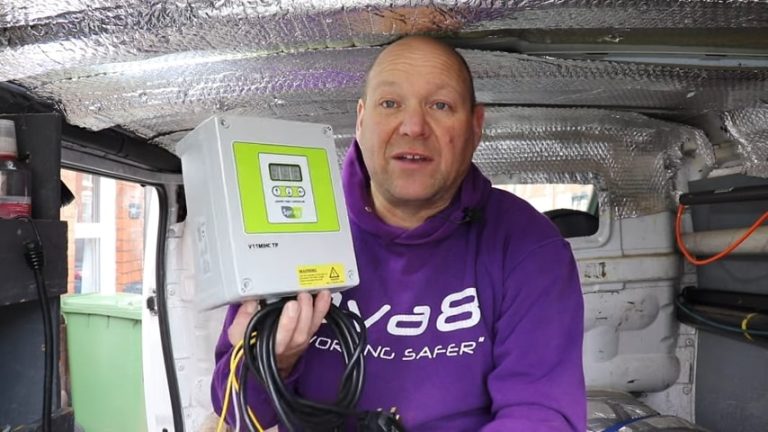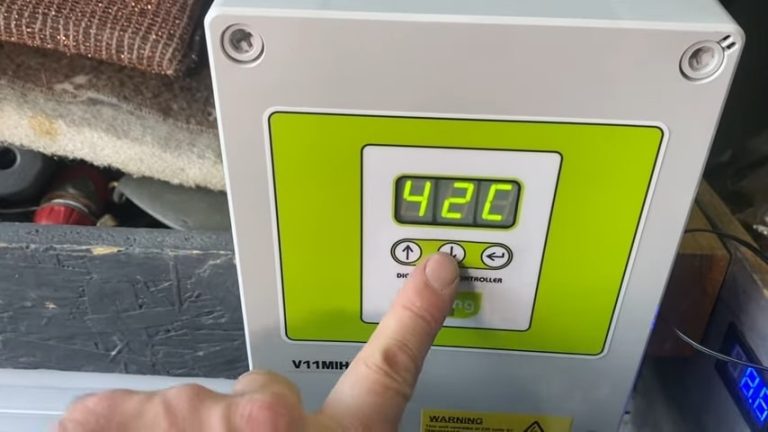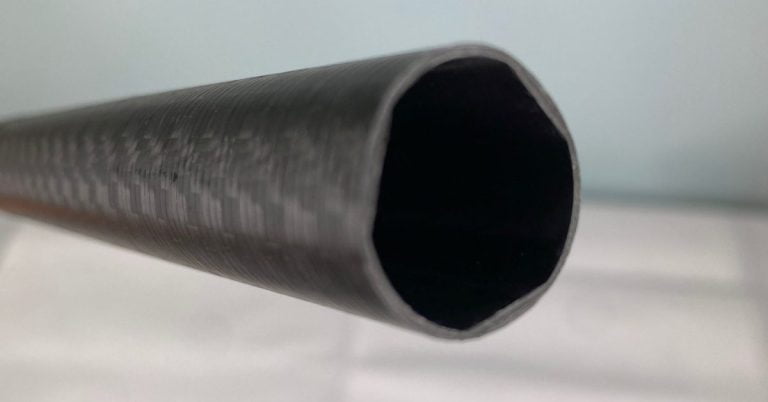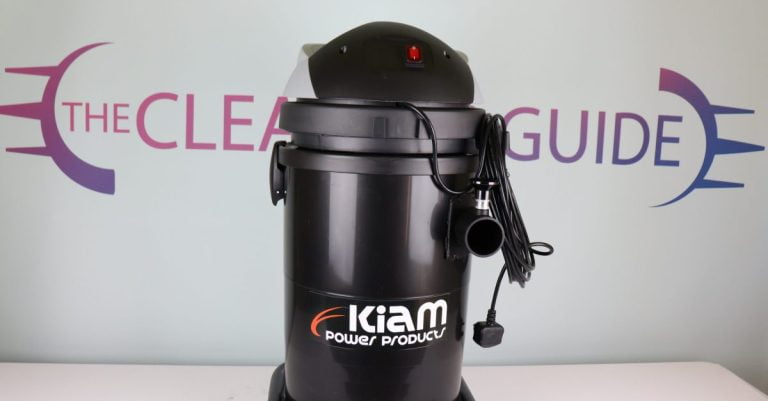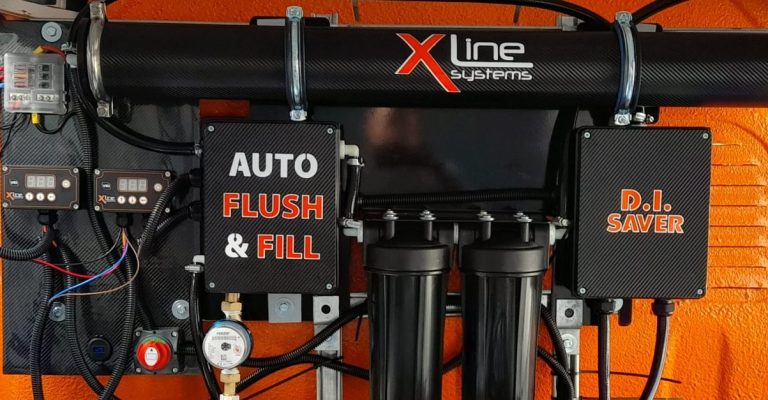This is a guest blog on The Cleaning Guide by:
Ian Sheppard
Sales Manager, Spring Europe LTDIan works with Spring, the electronics company that produce the most popular pump controllers. His expertise on controllers and electrical equipment makes him a valuable guest blogger on The Cleaning Guide
Cleaning a surface using WFP relies on having the right amount of water applied to the cleaning surface. High pressure and or high velocity result in water splashing all over the surface and can pull debris from the surroundings. Simply blasting water will not give good results
The right Water volume then is critical to a good result.
This blog aims to look behind the reasons for this and will examine pressure – Resistance and Water Volume
What is water pressure?
The force required to push water through the hose or pipe. Pressure is measured in “Bar” (Barometric) and “PSI” (Pounds per square inch) in some cases the water is being pushed upward against gravity.
Pressure can also be referred to as (Head) this term is common in domestic water systems and irrigation where pressure is created by height of a tank from the ground. So a water supply at 10 feet would have 10 feet of head. In this case gravity creates pressure as the water falls. A system with 10 feet (4 meters) of head will approximately generate pressure of 4.3psi.
In a water fed pole system pressure to force water up the hose to the glass can be produced from a mains supply (external water tap) Or in a tank based system by a pump. Our basic formula also applies to our pump delivery system as it is now the pump that helps create a head of pressure. In general terms then a minimum of 4.3psi is required to push water 10 feet (4 meters) up the hose against gravity. In general terms then if you have 100 feet ( 50 meters ) hose approximately 43psi is required
Note High pressure does not equal high flow. Actual pressure will vary system to system.
There are in reality other factors that need to be considered in terms of the pressure required to effectively move water to the area being cleaned. Some of these are considered below.
Pressure in a WFP system is created by:
1. Water itself pushes outward against the hose wall.
2. The hose wall pushing in the opposite direction
3. The Pump
4. Jets and other restrictions
What is hose wall resistance?
A hose will have a maximum expansion point. How far the hose will expand will determine how much water it can carry. Larger ID hoses will carry more water and generate less pressure/resistance when compared to smaller ID hoses.
Also, the inner wall of the hose will create resistance to the water flowing past it. When two objects, in our case a fluid and a solid, move past one another in particular when one is static, friction is generated. In the same way that we all rub our hands together when cold, the friction created generates heat.
When a fluid is moving against a solid rather than heat it creates resistance. The wall of the hose will actually slow down the water as it passes through the hose. So over 100 meters (300 feet), water at the input (pump) end of the hose has more energy than the water at the outlet end (brush or applicator). This is the effect of resistance along the hose.
What if a larger volume pump is used?
This may seem one solution. However, taking the the maximum capacity of the hose into account trying to force more water into the hose than it can carry will have the following effects
1. The hose restricts the water and creates more resistance
2. The velocity (speed) of the water is increased due to the restriction
3. The hose resistance creates turbulent flow which reduces the flow, not increases it
So the effect of using a larger pump will result in less water, not more.
The pump is working very hard trying to move all the water against the resistance of the hose. This means the pump is drawing a higher current and getting hotter for no gain in flow.
For the same reasons running a pump flat out with no controller will also not increase the flow or volume of water to the glass, the capacity of the hose to carry water is limited. Once the capacity is reached that is it.
It is better to have the right balance between pressure, water velocity and flow rates. This will create an efficient system that rarely breaks down.
If higher flow rates and volumes are required then increasing the ID of the hose is one method to achieve this.
How does temperature affect the water and hose?
The temperature will also affect the hose expansion rates. In low temperatures and in particular freezing or below the hose wall is stiffer than it would be during warm weather. So if the temperature is 0C (32F) the hose will carry less water and reach maximum expansion slowly. This does restrict the flow of water and effect pressure in the hose.
Temperatures above 10C (50F) will begin to see the hose wall become more supple and because it can expand further it will carry more water at lower pressure
The temperature will also affect the water. This is referred to as viscosity. Think of engine oil as an example cold oil is thick and flows slowly. However, when the engine has been running for a few minutes the oil temperature heats up and then flows faster as the heat thins it.
The same happens with water as temperatures fall water becomes thicker and moves more slowly. This will mean the pump has to work harder and pressure will increase.
How does pressure affect flow?
Having high pressure does not mean we get high flow. Because the hose can only carry a certain amount of water before it reaches its maximum capacity. Increasing pressure beyond this point will simply create back pressure as the hose wall resists the extra pressure reducing flow.
Also, high pressure means the hose connectors are under high strain, as is the pump motor, Remember the harder the pump works the more current it draws and in turn the hotter the pump becomes. Running a pump hot will mean the motor and motor brushes fail quicker than they should.
To get good flow we are looking to balance pressure created by the pump against the maximum amount of water the hose can carry.
What creates pressure?
In a WFP and softwash system pressure is created by
1. The pump.
2. The hose.
3. The brush jets.
While it may seem that a smaller ID hose and stiffer hose wall would create more pressure and a higher flow/volume at the brush/applicator. In reality, the reverse is true. High pressure increases the velocity (speed) of the water BUT the volume (flow) is reduced.
Why?
As the ID narrows, EG from 8mm to 6mm a restriction is created. This restriction has the effect of increasing the velocity of the water but reducing the space available for the water. The reduced space means there is less flow.
The pump is the main driver of pressure and the harder it works the more pressure it generates. As above, the harder the pump works the more current it draws.
Can I run a pump flat out to get more flow?
Due to the resistance of the hose and the pressure generated running a pump flat out will not give higher flow rates.
This is because a standard 5.2LPM (1.1GPM) pump will try to push all the 5.2 LPM into the hose, But remember the hose has a maximum capacity once this is reached the flow rate falls (Flow becomes turbulent) because the hose can not cope.
To demonstrate this effect some testing was carried out
Note: Testing was carried out using a pressurised system running 100 meters of 8mm ID hose. A Sureflow 5.2LPM 100 PSI pump was used. Max current rating 9 amps.
With the pump now working hard, drawing a current of 8 amps and getting hot at 70C. The flow rate from the jets was 2.5 LPM (0.5GPM). The system pressure was 70PSI in open flow and exceeded 100PSI on flow stop when a tap was closed.
2.5LPM then was the maximum capacity for the hose.
Next, a V11 Flow controller was used to gauge its effect on current, pressure and flow. Setting the controller to a flow rate of 65 produced the same water flow of 2.5LPM at the brush.
The effect on both current and pressure was dramatic, Current draw fell to just 4 amps, and system pressure fell to just 40PSI. The pump temperature fell to 50C
The V11 pump controller gave the same maximum possible water flow of 2.5LPM. BUT importantly reduced the current draw by half and pressure by 30 PSI. The pump temperature also was reduced by 20C.
Let’s look specifically at the water and hose. Once we know that the hose has a maximum capacity, for example, 2.5LPM trying to force more water into the hose will reduce flow.
To answer why this happens, we need to look at three flow states
Flow states
Laminar (Smooth flow water all travels in the same direction at the same rate)
Transitional (Less smooth becoming uneven)
Turbulent (Chaotic Water travels in different directions all at once)
Laminar flow means the water is flowing smoothly with very little resistance. Think of the water as having layers (see image) what we are looking for is that each layer is moving smoothly over the one below, so in this way all the water is moving in the same direction ( another good example would be a multi-lane road with all the traffic moving at the same speed in the same direction. In this way, a Motorway/Freeway can carry a large volume of traffic with no problem.
This is the most efficient state and will mean the pump is working only as hard as it needs to. There will be little to no strain on the pump motor, hose or connectors.
Transient flow means that the hose is reaching its maximum capacity and the hose wall is creating resistance to the water. Now rather than smooth layers of water all moving in one direction. The water flow begins to break up and the layers begin to cross over each other. Using the busy motorway/freeway example from above imagine you are now approaching a junction with traffic joining and leaving. The traffic is now travelling at different speeds and people are changing lanes. This has the effect of slowing everybody down and the traffic bunches up. It’s still moving but not as well as before.
Turbulent flow means that the hose capacity has been exceeded and the pump is now trying to force more water into the hose than it can take. Now the water flow is very uneven with layers of water becoming confused and moving in all directions at once, so the water flow becomes chaotic. Using our motorway example above imagine it’s rush hour and a truck has broken down in the middle lane. The resulting traffic slows to a crawl as drivers try to get around the obstruction.
Why should this matter you ask?
We come back to the ideal where the whole system is supplying the required water volume to the cleaning surface, The hose is working up to its capacity, the pump is working efficiently supplying only the water you need, and not working flat out.
A 100psi 8 amp pump is common in water-fed cleaning, typically the pump is capable of moving 5.2LPM (1.2 GPM) provided the outlet is not restricted. Once a hose is connected a restriction has now been introduced and flow will be limited by the capacity of the hose
Running a pump flat out straight from the battery does not increase the water flow or volume. Water volume and flow will be reduced. A hose has a maximum carrying capacity (flow rate) for example an 8mm ID hose this is 2.5LPM (0.6 gallons per minute) Having the pump produce more water at the outlet and into the hose will not increase flow through the hose or to the brush. This is because the water has become turbulent. All we actually have is the pump working very hard for no gain. The 8mm ID hose can still only carry 2.5LPM.
It makes no sense then to try to push more than 2.5LPM into our 8mm hose. The effect of running the pump flat out simply means the pump draws a high current and becomes hot, It also puts a high strain on the pump motor, hoses and connectors.
Running flat out, the pump draws 8 amps, reaching 70C with a system pressure of 75PSI. Introducing a pump controller allows the same water flow to be produced BUT the pump only draws 4 amps, pump temperature is 50C and pressure falls to just 40PSI. So to get the same 2.5LPM to the end of 100 meters of 8mm hose. A controller reduces current draw by half plus the pump is cooler and the system is under less strain.
The upshot here is the system can now run longer on the same battery charge ( More cleans per charge) The pump temperature is lower so it will last longer. The lower pressure will also mean less split hose, blown connectors and wasted downtime.
In short, you can
1. Earn more money.
2. Get longer life and better return on equipment investment
3. Work more efficiently
4. Less breakdowns = less stress
In conclusion, water volume is key to good results. A controller will allow the right volume to be applied. But will do so more efficiently and reliably time after time

